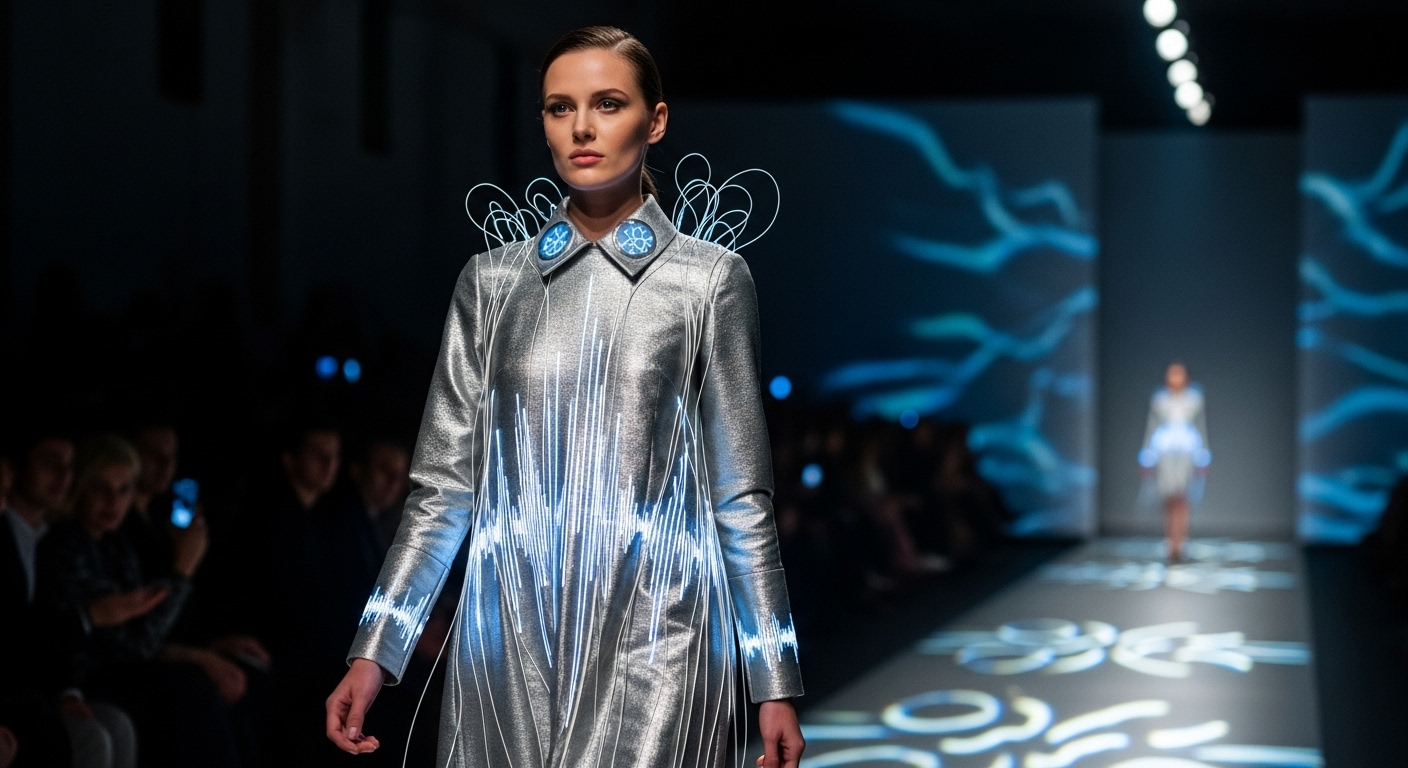Holographic Runway: Fashion's Digital Metamorphosis
In a dazzling fusion of technology and haute couture, the fashion industry is undergoing a revolutionary transformation. Holographic runways are emerging as the latest frontier in fashion presentation, blurring the lines between reality and digital artistry. This cutting-edge approach is not only reshaping how designers showcase their creations but also redefining the very essence of the fashion show experience. As we delve into this captivating trend, we'll explore its origins, current applications, and the profound impact it's having on the world of style and design.

Technological Marvels Behind the Scenes
At the heart of holographic runway shows lies a complex array of cutting-edge technologies. High-powered laser projectors, advanced motion capture systems, and sophisticated rendering software work in harmony to create lifelike, three-dimensional images that seem to float in mid-air. These systems are capable of projecting not just static images, but fully animated models that can walk, turn, and even interact with their virtual environment.
Redefining the Fashion Show Experience
Holographic runways are revolutionizing the way fashion shows are experienced. Traditional constraints of physical space and logistics are rendered obsolete, allowing designers to create otherworldly settings that defy the laws of physics. Audiences can be transported from underwater seascapes to futuristic cityscapes in the blink of an eye, all while models - both real and virtual - showcase the latest designs in stunning detail.
Sustainability and Accessibility in Fashion
One of the most significant advantages of holographic fashion shows is their potential to reduce the environmental impact of the industry. By eliminating the need for physical sets, props, and even some models, these digital presentations can significantly decrease waste and carbon emissions associated with traditional runway shows. Additionally, holographic technology opens up new possibilities for accessibility, allowing fashion enthusiasts from around the world to experience high-end shows without the need for travel.
The Creative Frontier for Designers
Holographic runways are not just changing how fashion is presented; they’re also influencing the creative process itself. Designers are now able to experiment with impossible fabrics, gravity-defying silhouettes, and dynamic, shape-shifting garments that could never exist in the physical world. This fusion of fashion and digital art is giving rise to a new breed of designer - one who is as versed in 3D modeling and animation as they are in textiles and tailoring.
Challenges and Criticisms
Despite the excitement surrounding holographic fashion shows, the technology is not without its critics. Some argue that the digital medium lacks the tactile and emotional connection of traditional runway experiences. There are also concerns about the potential for job displacement, particularly among models and set designers. Additionally, the high cost of implementing holographic technology remains a barrier for many smaller fashion houses and independent designers.
The Future of Fashion Presentation
As holographic technology continues to evolve, its integration into the fashion world is likely to become more seamless and widespread. Industry experts predict a future where physical and digital fashion shows coexist, offering designers a spectrum of options for showcasing their work. Some envision a hybrid model, where real models interact with holographic elements, creating a truly immersive and multi-dimensional experience.
Impact on Consumer Behavior and Retail
The rise of holographic runways is also influencing how consumers interact with fashion. Virtual try-on experiences and augmented reality shopping are becoming increasingly popular, allowing customers to visualize clothing on their bodies without physically trying them on. This technology has the potential to revolutionize the retail landscape, blending the convenience of online shopping with the interactivity of in-store experiences.
Ethical Considerations in Digital Fashion
As the line between real and virtual fashion blurs, new ethical questions are emerging. Issues of body image, diversity, and representation take on new dimensions in the digital realm. The fashion industry must grapple with how to ensure that holographic presentations promote positive values and inclusive beauty standards, even as they push the boundaries of creative expression.
In conclusion, holographic runways represent a bold step into the future of fashion presentation. By marrying cutting-edge technology with creative vision, the industry is crafting a new language of style that speaks to the digital age. As this trend continues to evolve, it promises to reshape not just how we see fashion, but how we engage with it on a fundamental level. The catwalk of tomorrow may well be a holographic one, offering endless possibilities for innovation, sustainability, and artistic expression.





